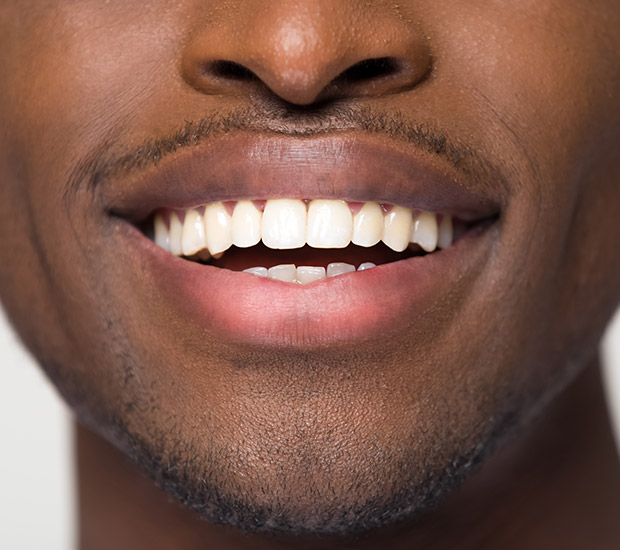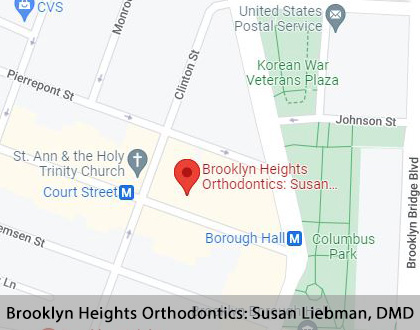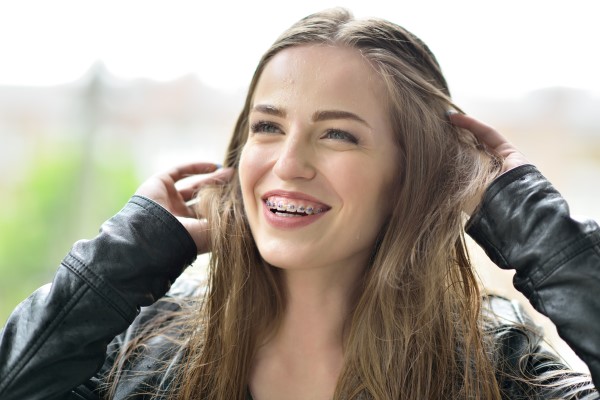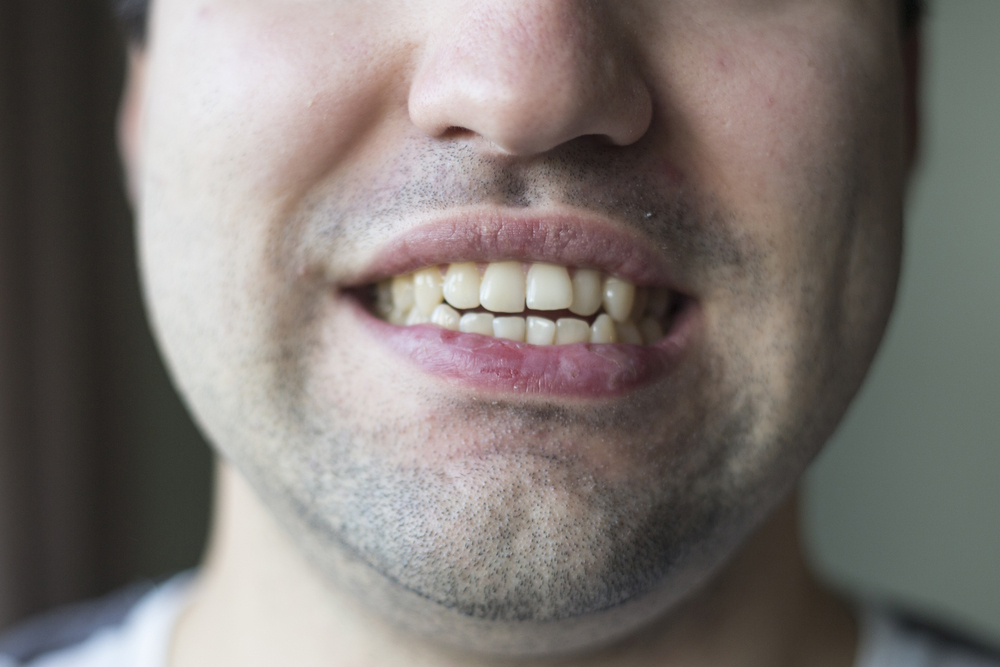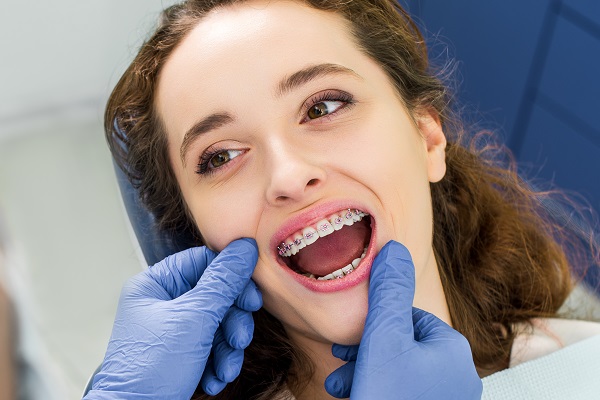Teeth Straightening Brooklyn, NY
Teeth straightening is about more than just aesthetics. A straighter smile is often a reflection of improved oral health. Teeth straightening can be achieved in several ways.
Teeth straightening is available at Brooklyn Heights Orthodontics: Susan Liebman, DMD in Brooklyn and the surrounding area. We can help get your child closer to a healthier and straighter smile. Call us today at (718) 416-6368 to schedule an appointment or learn more about our services.
Different Teeth Straightening Options
Thanks to modern dental technologies, there are more teeth straightening options available than ever. These include:
- Ceramic braces
- Clear aligners
- Traditional metal braces
Traditional metal braces, ceramic braces, and lingual braces all work in more or less the same way, using brackets and wires to guide the teeth into the proper position over time. Traditional braces and ceramic braces may also sometimes use rubber bands to put extra pressure on the teeth. Each type has its own set of advantages and disadvantages that patients will want to discuss with the orthodontist.
Clear aligners differ in that they are clear plastic trays that are virtually invisible on the teeth. They are designed to fit tightly over the teeth, and patients must switch out to a new set of aligners every few weeks to guide their teeth into their correct position. Unlike braces, clear aligners are removable, but patients need to wear them for 20-22 hours a day for them to be effective.
“Thanks to modern dental technologies, there are more teeth straightening options available than ever.”
Braces and Retainers
The word “braces” refers to a certain set of dental devices that correct any orthodontic issues a patient may have. Such problems may include crowding or misaligned teeth. Though braces are most commonly worn by teenagers, they can also benefit adults. Braces work by straightening teeth and correcting one’s bite over time.
However, these results must be maintained even after completing treatment. Patients can often do this by wearing retainers, which are dental devices custom-made to hold the teeth in place. There are three types of retainers: bonded retainers (or fixed retainers), Hawley retainers (or removable wire retainers), and clear plastic retainers (or removable clear retainers).
“What is the difference between braces and retainers?”
Expanders
Palate expanders, also known as orthodontic expanders, are used to correct a crossbite or narrow upper jaw. There are several different types of palate expanders, including:
- Haas expander
- Hyrax rapid palatal expander
- Removable palate expander
- Quad helix appliance
Palate expanders work best in young children because the jawbones are still developing during puberty. As such, treatment time with palate expanders is typically shorter for children than it is for teenagers or adults.
In general, children can see results in about two to three months — though the expander must remain in the mouth for another four to six months, so the two sides of the jaw bone have time to fuse. However, adults may need to wait a year or longer — or opt for a surgically inserted palate expander instead.
“Palate expanders, also known as orthodontic expanders, are used to correct a crossbite or narrow upper jaw.”
Check out what others are saying about our orthodontic services on Yelp: Teeth Straightening in Brooklyn, NY
Length of Various Treatments
The amount of time it takes to complete orthodontic treatment depends on a case-by-case basis. However, most patients get their braces off within one to three years. In general, the more complicated the case, the longer it will take to see results. Factors to consider are how crooked one’s teeth are and the type of malocclusion being treated.
Treatment with certain types of clear aligners can take up to 12 to 18 months on average. Some patients start seeing results in a matter of weeks. Those who have had braces before may complete treatment in as little as 10 weeks.
“The amount of time it takes to complete orthodontic treatment depends on a case-by-case basis.”
Questions Answered on This Page
Q. What are the different teeth straightening options?
Q. Braces work by straightening teeth and correcting one’s bite over time.
Q. How long does it take to complete clear aligner therapy?
Q. When is a good time to straighten teeth?
People Also Ask
Q. What happens during an orthodontic evaluation?
When and How to Straighten Teeth
Patients of any age can benefit from teeth straightening. However, it is ideal to place braces on patients between the ages of 10 and 14. The head and mouth are still growing during this time, and teeth are still developing and are thus more conducive to straightening. Still, it is never too late for orthodontic treatment.
Though it may be tempting to try DIY home teeth straightening methods, nothing can replace a qualified dentist's expertise. After completing their undergraduate degree, they must undergo four years of dental school, and complete a residency. Trying to straighten one’s teeth at home can put excess strain on the tooth roots and ligaments, which can even kill a tooth.
“Though it may be tempting to try DIY home teeth straightening methods, nothing can replace the expertise of a qualified dentist.”
Frequently Asked Questions
Q. What happens if I lose or break one of my clear aligners?
A. Call your dentist immediately so they can get started making a replacement set of aligners for you. In the meantime, your dentist may tell you to wear the previous set of aligners. Alternatively, you may be told to move onto the next set, depending on what stage you are in your treatment.
Q. Will I need to wear retainers after completing clear aligner therapy?
A. Yes, you will need to wear retainers whether you have worn braces or clear aligners. Teeth tend to want to shift back to their original location after active orthodontic treatment. Brooklyn Heights Orthodontics: Susan Liebman, DMD can discuss all of your options with you and determine which one best suits your needs.
Q. How often will I need to come in for check-ups when I have braces?
A. Most patients need to come in every four to eight weeks for Brooklyn Heights Orthodontics: Susan Liebman, DMD to check up on their progress. These visits may include adjustments to the braces. These appointments typically take 20 to 40 minutes.
Q. Do braces hurt?
A. Most patients do not experience pain with braces. However, it is not uncommon to feel some discomfort when first getting braces or having your braces tightened or adjusted. If your braces are causing you considerable pain, call us right away.
Q. How often do I need to clean my teeth while wearing braces?
A. Since braces can make it difficult to maintain your oral hygiene routine, we recommend brushing your teeth more often than you did before. In general, four times a day should be adequate: after breakfast, after lunch, after dinner, and before bed. Floss threaders or interdental brushes are recommended for cleaning in between teeth.
Quality Orthodontic Services Can Transform Smiles
By visiting us as soon as possible, our team can help get you the professional treatment you need.
Definition of Orthodontic Terminology
Call Us Today
Teeth straightening can improve one’s smile and oral health. We at Brooklyn Heights Orthodontics: Susan Liebman, DMD can help. Call us today at 718-416-6368 to schedule an appointment or learn more about our services.
Helpful Related Links
- American Dental Association (ADA). Glossary of Dental Terms. 2021
About our business and website security
- Brooklyn Heights Orthodontics: Susan Liebman, DMD was established in 1963.
- We accept the following payment methods: American Express, Cash, Check, Discover, MasterCard, and Visa
- We serve patients from the following counties: Kings County
- We serve patients from the following cities: Brooklyn, Cobble Hill, Clinton Hill, Williamsburg, Boerum Hill, Brooklyn Heights, Park Slope, DUMBO, and Prospect Heights
- Norton Safe Web. View Details
- Trend Micro Site Safety Center. View Details
Back to top of Teeth Straightening
